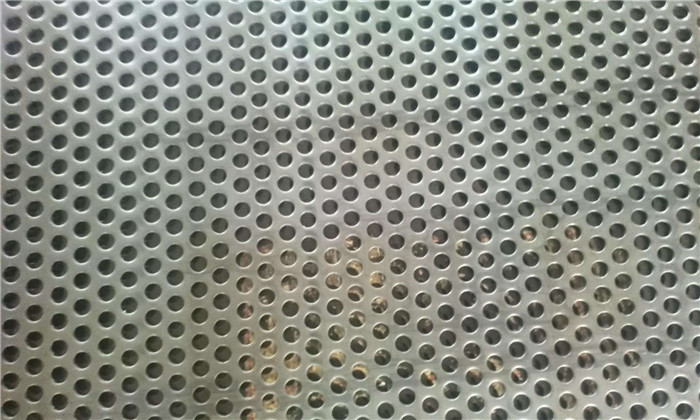How to Effectively Remove Rust from Stainless Steel Perforated Sheets
Source:www.cn-psp.cnAuthor:河北森驰公司 Last updated:2025-06-14 13:52:04 Browse:
Stainless steel perforated sheets are widely used metal mesh products found in construction, machinery, filtration, and decorative applications. Manufactured by CNC punching equipment on stainless steel plates, these sheets feature a flat surface, uniform holes, high strength, and excellent resistance to corrosion, acids, and alkalis. Their combination of functionality and aesthetics makes them indispensable in both industrial and domestic settings.
However, a common misconception is that “stainless steel” never rusts. In reality, stainless steel perforated sheets may still develop rust stains under certain environmental conditions. In this article, Anping Senchi Punched Net Factory provides a comprehensive guide to understanding why stainless steel perforated sheets rust and how to effectively remove and prevent rust formation.
1. Why Do Stainless Steel Perforated Sheets Rust?
The corrosion resistance of stainless steel comes from a chromium-rich oxide layer on its surface, which prevents further oxidation. However, this protective film is not indestructible and can degrade in harsh environments.
Material Composition: Common stainless steel perforated sheet materials include 201, 304, 316, 409, and 430. Among these, 201, 409, and 430 contain lower levels of chromium and are more prone to rust, often referred to as “stainless iron.” In contrast, 304 and 316 contain higher chromium levels and offer better corrosion resistance, though they can still rust if the protective layer is compromised.
Environmental Factors: High humidity, salt-laden air (e.g., coastal areas), and acidic or alkaline surroundings can break down the oxide layer and accelerate rust formation.
Improper Handling: Welding, surface scratches, water accumulation, or contact with iron particles may also initiate corrosion.
Even premium grades like 304 or 316 can rust without proper care and maintenance.
2. How to Remove Rust from Stainless Steel Perforated Sheets
When rust appears on a stainless steel perforated sheet, prompt treatment is essential to prevent further damage and maintain the material's appearance and performance. Here are several effective rust removal methods:
1. Chemical Cleaning (for light rust)
White vinegar or citric acid: These mild acids can dissolve iron oxide. Apply directly to the rusted area and let it sit for about 15 minutes before wiping with a soft cloth.
Baking soda paste: Mix baking soda with water to form a paste, apply it to the rust, and gently scrub.
Important: Always rinse thoroughly with clean water after treatment and dry completely to avoid further corrosion.
2. Mechanical Cleaning (for moderate rust)
Use a wire brush or abrasive pad to manually scrub away rust spots.
For larger or more stubborn areas, electric grinders or sanders may be used for faster and more thorough results. Take care to avoid deep scratches.
3. Electrolytic Polishing (for high-standard applications)
This method is ideal for decorative or precision applications. Electrolytic polishing not only removes rust but also enhances the surface finish and corrosion resistance of the stainless steel perforated sheet.

stainless steel Perforated sheet
3. Rust Prevention Tips: Prevention Is Better Than Cure
While rust removal is important, preventing rust in the first place is far more effective. Consider the following practical tips:
Choose Higher-Grade Material: Whenever possible, opt for 304 or 316 stainless steel perforated sheets, which offer superior rust resistance compared to lower grades like 201 or 430.
Surface Protection:
Apply anti-rust oil during storage or transport to protect the surface.
Alternatively, consider spray coating with rust-resistant paint or protective sealants.
Routine Cleaning: Keep the surface clean and dry. Avoid prolonged contact with water, dust, or corrosive substances.
Avoid Contact with Carbon Steel: Iron particles or filings can cause galvanic corrosion if left on the stainless surface.
4. Conclusion
Despite their excellent corrosion resistance, stainless steel perforated sheets are not immune to rust. Understanding their material properties, along with proper maintenance and rust prevention strategies, can significantly extend their lifespan and preserve their appearance. For more professional advice or customized stainless steel perforated sheet solutions, feel free to contact Anping Senchi Punched Net Factory — your reliable partner in metal mesh products.
